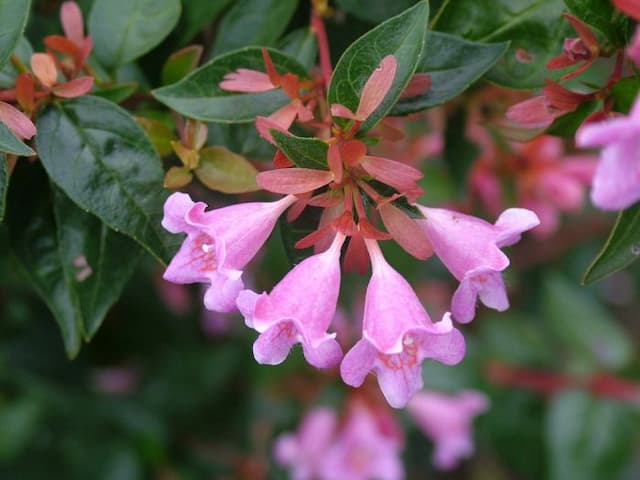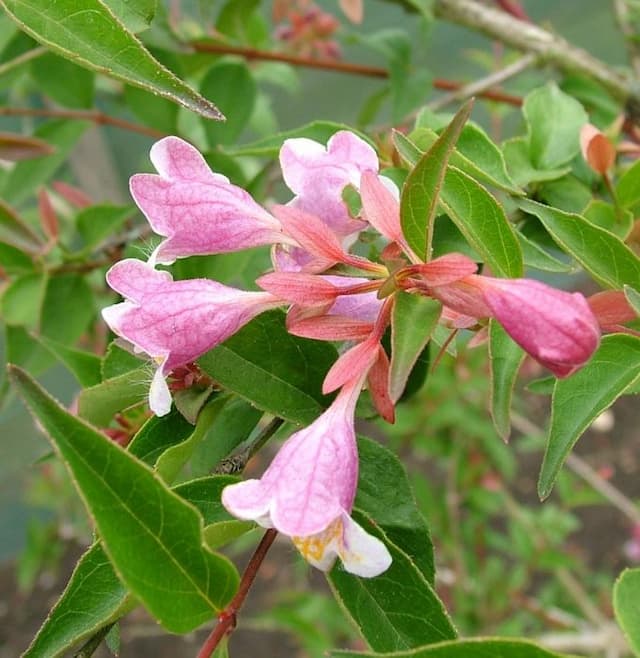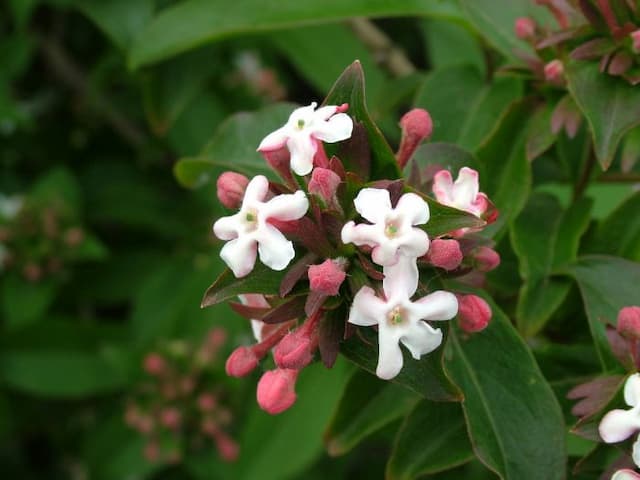Pincushion flower Scabiosa atropurpurea 'Chile Black'

ABOUT
Scabiosa atropurpurea 'Chile Black', commonly known as the Pincushion Flower, boasts a striking appearance with its unique blooms and foliage. The flowers of 'Chile Black' are particularly mesmerizing with their deep, velvety maroon to almost black petals that give rise to the name 'Chile Black'. These dramatic flowers resemble pincushions due to the prominent stamens that poke out from the center of the bloom, giving the flowers a whimsical, spiky appearance. Each flower head is perched atop a slender stem, which gently sways with the breeze and adds a sense of movement to the garden. The foliage of the Pincushion Flower is also worth noting. The leaves are typically a gray-green color, providing a soft, muted backdrop that further accentuates the dark beauty of the blooms. The leaves are finely divided and give the plant an airy, delicate texture. 'Chile Black' performs a dual function in garden design. Not only does it serve as an enchanting focal point thanks to its dark blossoms, but it also acts as an excellent foil for brighter flowers, allowing their colors to pop in contrast. When in bloom, this plant can be a magnet for bees, butterflies, and other pollinators, adding an extra layer of life and activity to its surroundings. Additionally, the cut flowers of the Pincushion Flower make for dramatic and long-lasting additions to floral arrangements.
About this plant
 Names
NamesSynonyms
Pincushion Flower, Mourning Bride, Sweet Scabious, Mournful Widow, Egyptian Rose.
Common names
Scabiosa atropurpurea 'Chile Black'.
 Toxicity
ToxicityTo humans
The Scabiosa, commonly known as the Pincushion Flower, is not generally regarded as a toxic plant to humans. However, as with many plants, individual sensitivities can vary, and it is possible for some people to experience an allergic reaction or mild irritation when handling or ingesting the plant. There aren't well-documented cases of poisoning in humans from the Pincushion Flower, and significant toxic effects appear to be rare.
To pets
The Pincushion Flower is not typically listed as a toxic plant to pets including cats and dogs. While the Scabiosa atropurpurea 'Chile Black' variety is considered to be non-toxic, it is still advised to prevent pets from ingesting plants as a precautionary measure. If a pet does ingest a substantial amount of the plant and shows signs of distress or unusual behavior, it would be prudent to consult a veterinarian, although significant toxicity from the Pincushion Flower is not commonly reported.
 Characteristics
CharacteristicsLife cycle
Annuals
Foliage type
Deciduous
Color of leaves
Green
Flower color
Maroon
Height
2-3 feet (60-90 cm)
Spread
1 foot (30 cm)
Plant type
Herb
Hardiness zones
9
Native area
Mediterranean
Benefits
 General Benefits
General Benefits- Aesthetic appeal: Scabiosa atropurpurea 'Chile Black', commonly known as the pincushion flower, has striking deep maroon to almost black flowers, adding a dramatic touch to gardens and bouquets.
- Attracts pollinators: Its nectar-rich blooms are highly attractive to bees, butterflies, and other beneficial pollinators, helping to support local ecosystems.
- Drought tolerance: Once established, the pincushion flower is quite drought-tolerant, making it suitable for xeriscaping and low-water gardens.
- Long blooming period: These flowers typically bloom from late spring to fall, providing color and interest in the garden for an extended period.
- Cutting garden staple: The unique blooms make excellent cut flowers for arrangements, with a long vase life.
- Easy to grow: Pincushion flowers are relatively easy to cultivate and can thrive in a range of soil types, as long as they have good drainage.
- Versatile planting options: They are suitable for borders, flower beds, and containers, offering flexibility in landscape design.
- Deer resistance: The plant is known to be less palatable to deer, which can help prevent damage in areas where deer browsing is a common problem.
- Minimal maintenance: Pincushion flowers require little maintenance once established, aside from deadheading to encourage continued blooming.
- Self-seeding capabilities: Scabiosa atropurpurea can self-seed under favorable conditions, providing new plants in the following growing season without additional effort.
 Medical Properties
Medical PropertiesThis plant is not used for medical purposes.
 Air-purifying Qualities
Air-purifying QualitiesThis plant is not specifically known for air purifying qualities.
 Other Uses
Other Uses- Photography: Chile Black provides a stunning, dark contrast in floral photography, often used to create dramatic and moody imagery.
- Fabric Dying: The deep-colored blooms can be used in natural dye processes to impart color on fabrics.
- Ink Making: Petals of the Scabiosa can be crushed and processed to make a natural, plant-based ink for art purposes.
- Plant Patterning: The unique shape of the foliage and flowers can be used in the art of nature printing, where the plant parts are used to make impressions on paper or textiles.
- Eco-friendly Confetti: Dried petals of the Chile Black can be used as biodegradable confetti for weddings or other celebrations.
- Bookmarks: Pressed flowers of the Scabiosa can be laminated or encased to create decorative bookmarks.
- Edible Cake Decorations: While not commonly known for this use, the petals, if free from pesticides, can potentially adorn cakes and desserts after proper preparation.
- Crafting Potpourri: Dried blooms can be added to potpourri mixes for their color and subtle natural fragrance.
- Herbal Sachets: Dried Scabiosa flowers can be included in herbal sachets to impart a light fragrance to linens and clothing.
- Seed Crafts: The seeds of Chile Black can be used in seed art or for creating mosaics for educational or artistic projects.
Interesting Facts
 Feng Shui
Feng ShuiThe Pincushion Flower is not used in Feng Shui practice.
 Zodiac Sign Compitability
Zodiac Sign CompitabilityThe Pincushion Flower is not used in astrology practice.
 Plant Symbolism
Plant Symbolism- Admiration: The 'Chile Black' scabiosa, also commonly known as the pincushion flower, symbolizes admiration due to its unique beauty and intricate form, suggesting a deep respect and fascination for the object of admiration.
- Love: In the language of flowers, scabiosa has historically been a symbol of love, and the 'Chile Black' variety, with its deep, almost black blossoms, brings an air of mystery and depth to this sentiment.
- Purity: Although 'Chile Black' has a dark coloring, scabiosa flowers in general are often associated with purity, possibly stemming from their tidy, compact form and the way the round 'cushion' of the flower emerges from the untainted foliage.
- Widowhood: Specifically, the 'Chile Black' variant might be associated with widowhood or mourning due to its dark, somber hues, which are reminiscent of traditional mourning attire. The flower could be used to express sympathy or remembrance for a lost loved one.
 Water
WaterPincushion flowers, including the 'Chile Black' variety, prefer to be kept evenly moist but not waterlogged. During its growing season in spring and summer, water the plant whenever the top inch of soil feels dry, which typically means watering roughly once a week with about 16 ounces per square foot. Make sure the plant is in well-draining soil to avoid root rot. In the cooler months, you can reduce the frequency, allowing the soil to dry out slightly more between waterings. It’s essential not to let the plant sit in soggy soil, so ensure any saucer or pot without drainage holes is emptied after watering.
 Light
LightPincushion flowers like 'Chile Black' thrive best in full sun conditions. Find a spot where the plant will receive at least six to eight hours of direct sunlight daily. This sunlight exposure is crucial for the development of the rich, dark hues of the blooms. If you're growing them indoors, place them near a south-facing window for optimum light. In extremely hot climates, providing afternoon shade can help protect the plant from intense heat.
 Temperature
TemperaturePincushion flowers including ‘Chile Black’ perform well in a range of temperature conditions generally between 40 degrees Fahrenheit and 85 degrees Fahrenheit. They can tolerate short periods of colder weather but sustained temperatures below 40 degrees may damage the plant. The ideal growing temperature range for vigorous growth and flowering is between 60 degrees Fahrenheit and 75 degrees Fahrenheit. Avoid exposing the plant to frost and extreme heat which might hamper its development.
 Pruning
PruningPruning pincushion flowers like 'Chile Black' is beneficial to encourage bushier growth and more blooms. Deadheading, or cutting off spent flowers, will promote continuous blooming throughout the growing season. Lightly prune the plant in early spring to shape it and remove any dead or damaged stems. The best time to perform more extensive pruning is after the last frost in your area to avoid exposing fresh cuts to extreme cold.
 Cleaning
CleaningAs needed
 Soil
SoilPincushion flower, Scabiosa atropurpurea 'Chile Black', thrives in well-drained, moderately fertile soil with a neutral to slightly alkaline pH range of 6.5 to 7.5. A mix might include loamy garden soil, compost, and coarse sand or perlite to ensure good drainage and aeration.
 Repotting
RepottingPincushion flowers typically do not require frequent repotting. Scabiosa atropurpurea 'Chile Black' should only be repotted if it outgrows its current container or every 2-3 years to refresh the soil and remove any built-up salts.
 Humidity & Misting
Humidity & MistingPincushion flowers are adaptable to a wide range of humidity levels and do not require special humidity conditions. Scabiosa atropurpurea 'Chile Black' will do well in average room humidity.
 Suitable locations
Suitable locationsIndoor
Ensure adequate light and well-draining soil for indoor Pincushion flowers.
Outdoor
Choose a sunny spot with well-draining soil for outdoor Pincushion flowers.
Hardiness zone
7-10 USDA
 Life cycle
Life cycleScabiosa atropurpurea 'Chile Black', also known as Pincushion Flower 'Chile Black', begins its life cycle as a seed which, when sown in spring after the last frost or in autumn in warmer climates, will germinate in warm, well-drained soil. Seedlings emerge and develop into a rosette of leaves, and as the plant matures, it produces tall, branching stems with deeply lobed leaves. From early summer to fall, the plant blooms, displaying its dark burgundy to almost black flowers that attract pollinators like bees and butterflies. After flowering, the plant sets seed, which can be collected for propagation or allowed to self-sow in the garden. In cold regions, Scabiosa atropurpurea 'Chile Black' may behave as an annual, completing its life cycle within one growing season, while in milder climates it can act as a short-lived perennial, surviving for a few years. Throughout its life, the plant requires full sun and moderate watering, with good drainage being important to prevent root rot.
 Propogation
PropogationPropogation time
Spring-summer
Propogation: The Scabiosa atropurpurea 'Chile Black', commonly known as the Pincushion Flower, is often propagated through seeds. The ideal time for sowing Pincushion Flower seeds is in early spring, after the danger of frost has passed, or in autumn if the climate is suitable. To propagate, you should scatter the seeds on top of a well-drained seed starting mix, barely covering them with soil as they need light to germinate. Keep the soil moist but not waterlogged. Seeds usually germinate in two to three weeks at room temperature. Once seedlings are large enough to handle and after all risk of frost has passed, they can be transplanted outdoors into their final growing positions, spacing them about 12 inches (approximately 30 centimeters) apart to accommodate their growth.







![Himalayan honeysuckle [Golden Lanterns]](/_next/image?url=https%3A%2F%2Fplants-admin.emdemapps.com%2Fimages%2Fplants%2F%2Fimages%2F604b55302cc87.png&w=640&q=75)

